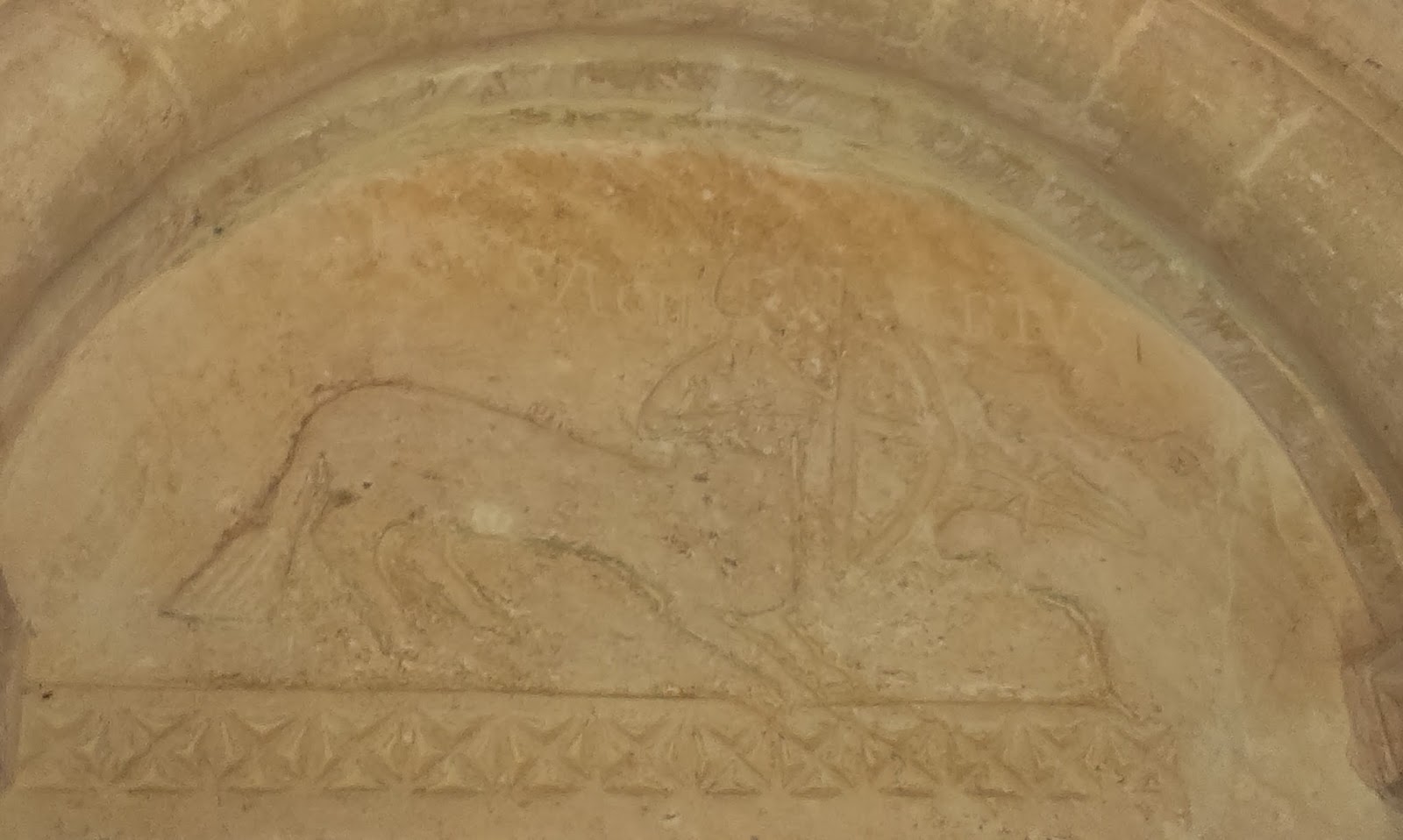As it was a Bank Holiday it somehow begged to be spent on a bit of a mega-trip seeking more Norman excitement - and despite the weather we did just that. It rained from the minute we set out to half an hour after we got in - but we did not let that put us off.
We decided to go to what is known by us as a "pink area" - which means that there is a cluster of churches in one area which have been rated (by us, via Pevsner) to have top quality carvings. Our ratings are based on what has been said in the book rather than our appraisal of it post-visit, and so they do not always prove accurate, but pinks usually have more than one thing of interest. It is amazing that this particular area, north of Swindon, is jam-packed full of churches with pink status, so much so that we could barely drive in any direction without encountering a pink village. Talk about being spoilt for choice.
 |
| Kencot |
We drove to the furthest one north so that we could work our way back (probably wise, given that otherwise we could have been "just having a look at the next village" all day long). Kencot in Oxfordshire (near to the wonderful Cotswold Wildlife Park) had a delightful little church and an equally delightful tympanum set over the main doorway. It featured Sagittarius with a bow and arrow drawn on a poor dragon's head. I loved the dragon's head, it was big and bold with a comical look and a pleasing eye and ear. Sagittarius had well observed legs and hooves and his name "Sagittarius" across the picture, which I was stupid enough to begin to write in the wrong place on my drawing!

Our next stop, on the road back south, was Langford, Oxfordshire. As soon as we approached we were amazed to see a large Saxon figure of Jesus (minus his head, poor chap) on the side of the porch. It looked very similar to the wonderful carvings at Daglingworth, Gloucestershire, because of the proportions of the figure, quite thin, with a long tunic and a rope tie around the tunic. We would have loved to draw Saxon Jesus but the rain just would not stop and it was not possible. Inside the church (accompanied by a faintly unpleasant smell) was a nice window of St Francis of Assisi and lots of birds.


Heading south again, we stopped at Inglesham, back inside the border of Wiltshire. We were not expecting what we found: the church is not one in active use but is preserved by the Churches Conservation Trust. It has escaped the sometimes ghastly make-overs done by the Victorians and as such you could see what churches used to be like before those times. Of Anglo Saxon origin, it has traces of wall paintings, wooden box pews and ancient memorials. There in the corner was an Anglo Saxon carving of Jesus and Mary, looking for all the world like some weird creepy alien face from modern times. I am not being sacrilegious, but simply describing what I saw. The features of Mary's face were rather strange, and although Jesus's facial features were a bit worn, we both thought he looked like he was an adult form on her knee, rather than a baby.
Our next stop was at the larger Highworth, where we glad to get out of the rain and find a re-positioned tympanum, over the entrance but inside the church. It was a touch too high up to see well and I did a most unsatisfactory drawing of it, but it was an interesting subject: Samson and the lion. Samson, in cloak and dress, had both hands on the lion's mouth. I feel he should have left him alone really.
Disappointingly, Stanton Fitzwarren church was locked, despite proclamations on the notice board that we were welcome to come in and look at its history. I had been looking forward to seeing a font with detailed carvings of figures, but there are times when you are just not in the mood for ringing the church warden, especially when it was still raining and there were simply loads of other "pinks" to choose from along the way.

So we back-tracked north a little to visit Castle Eaton, and I was pleased to actually navigate accurately to the church for once. We were greeted by a pleasingly chunky font in the belltower, with a swirly foliage band around the centre, and also two more of the beautiful dragon head carvings on either side of the main entrance. These were smaller versions to the ones we have seen, but for me, equally appealing with their big toothy grins. And indeed we had had plenty to smile about in such a packed day and who cares that it rained all day, that is traditional.




























